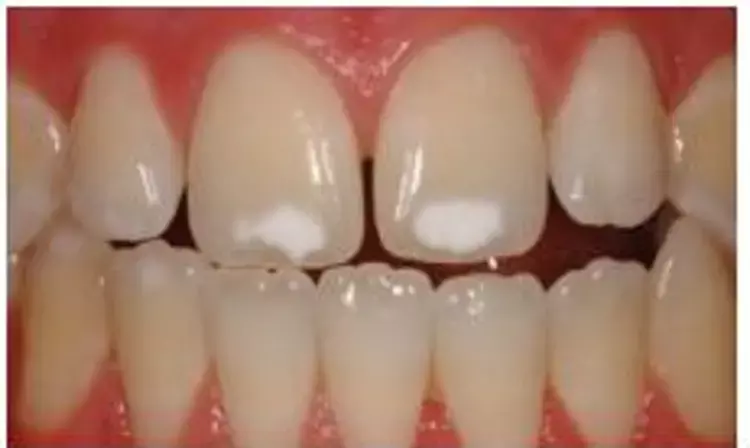- Home
- Medical news & Guidelines
- Anesthesiology
- Cardiology and CTVS
- Critical Care
- Dentistry
- Dermatology
- Diabetes and Endocrinology
- ENT
- Gastroenterology
- Medicine
- Nephrology
- Neurology
- Obstretics-Gynaecology
- Oncology
- Ophthalmology
- Orthopaedics
- Pediatrics-Neonatology
- Psychiatry
- Pulmonology
- Radiology
- Surgery
- Urology
- Laboratory Medicine
- Diet
- Nursing
- Paramedical
- Physiotherapy
- Health news
- Fact Check
- Bone Health Fact Check
- Brain Health Fact Check
- Cancer Related Fact Check
- Child Care Fact Check
- Dental and oral health fact check
- Diabetes and metabolic health fact check
- Diet and Nutrition Fact Check
- Eye and ENT Care Fact Check
- Fitness fact check
- Gut health fact check
- Heart health fact check
- Kidney health fact check
- Medical education fact check
- Men's health fact check
- Respiratory fact check
- Skin and hair care fact check
- Vaccine and Immunization fact check
- Women's health fact check
- AYUSH
- State News
- Andaman and Nicobar Islands
- Andhra Pradesh
- Arunachal Pradesh
- Assam
- Bihar
- Chandigarh
- Chattisgarh
- Dadra and Nagar Haveli
- Daman and Diu
- Delhi
- Goa
- Gujarat
- Haryana
- Himachal Pradesh
- Jammu & Kashmir
- Jharkhand
- Karnataka
- Kerala
- Ladakh
- Lakshadweep
- Madhya Pradesh
- Maharashtra
- Manipur
- Meghalaya
- Mizoram
- Nagaland
- Odisha
- Puducherry
- Punjab
- Rajasthan
- Sikkim
- Tamil Nadu
- Telangana
- Tripura
- Uttar Pradesh
- Uttrakhand
- West Bengal
- Medical Education
- Industry
Fluoride Iontophoresis novel Non-Invasive Technique Of Enamel Remineralisation

A recent study has been published in The Journal Of Dental Research about the remineralization of enamel in case of the occurrence of early dental caries. Early caries is often characterized by the presence of a non-cavitated white spot sub-surface of enamel caused due to dissolution of the crystals resulting in demineralization from the surface to the subsurface of enamel. According to the research, early dental caries is represented as a non-cavitated white spot lesion(WSL) due to the demineralization of the hydroxyapatite crystal caused in response to the acidic environment produced as a result of their interaction between the oral microorganisms & regular food intake of that particular type.
The current study focussed on investigating the more reliable non-invasive technique for delivering the mineralizing agents into the lesion zone, also contributing to finding out the structural & compositional characteristics, including the remineralization effect of 5% sodium fluoride (NaF) Iontophoresis (IP) with different polarities, i.e., Cathodal Iontophoresis(CIP) & Anodal Iontophoresis(AIP).
According to the study, human premolars with a naturally smooth surface having a white spot lesion (WSL) on the crown have been considered as a specimen for the experiment. The participants were divided into different groups according to the type of treatment made, i.e., 5% NaF CIP, AIP & Topical application of the drug over the lesion area. All the specimens were analyzed with the synchrotron radiation-based XAS & scanning electron microscopy (SEM)-energy dispersive X-ray spectroscopy (EDS) before & after treatment.
The study results revealed some important facts:
Baseline mineral density increased after the treatment.5% NaF with AIP for 40 seconds showed a significant increase in mineral density for both the intact enamel and WSL zone.
Noticeable reduction in lesion shape with increased mineral density & radiopacity.
SEM-EDS analysis confirmed the increment in the mean percentage of sodium (Na) at the WSL zone after treatment.
The mean rate of fluoride intake in the lesions increased six times after treatment with AIP.
5% NaF CIP for 40 seconds showed an increase in mineral density of WSL volume & subsurface region with a noticeable change in the crystal morphology.
The team concluded that potential IP treatment could apparently enhance the penetration of F to the subsurface region and rapidly promote the essential repair of enamel caries. The study confirmed the positive outcomes of this technique as a reliable treatment method for controlling the WSL via increasing the remineralization of enamel. This also opens up a new path to control dental caries at an early stage.
For the full article, follow the link below:
https://journals.sagepub.com/doi/10.1177/00220345221138513#bibr8-00220345221138513
Reference: Journal Of Dental Research
Dr Satabdi Saha (BDS, MDS) is a practicing pediatric dentist with a keen interest in new medical researches and updates. She has completed her BDS from North Bengal Dental College ,Darjeeling. Then she went on to secure an ALL INDIA NEET PG rank and completed her MDS from the first dental college in the country – Dr R. Ahmed Dental College and Hospital. She is currently attached to The Marwari Relief Society Hospital as a consultant along with private practice of 2 years. She has published scientific papers in national and international journals. Her strong passion of sharing knowledge with the medical fraternity has motivated her to be a part of Medical Dialogues.
Dr Kamal Kant Kohli-MBBS, DTCD- a chest specialist with more than 30 years of practice and a flair for writing clinical articles, Dr Kamal Kant Kohli joined Medical Dialogues as a Chief Editor of Medical News. Besides writing articles, as an editor, he proofreads and verifies all the medical content published on Medical Dialogues including those coming from journals, studies,medical conferences,guidelines etc. Email: drkohli@medicaldialogues.in. Contact no. 011-43720751


